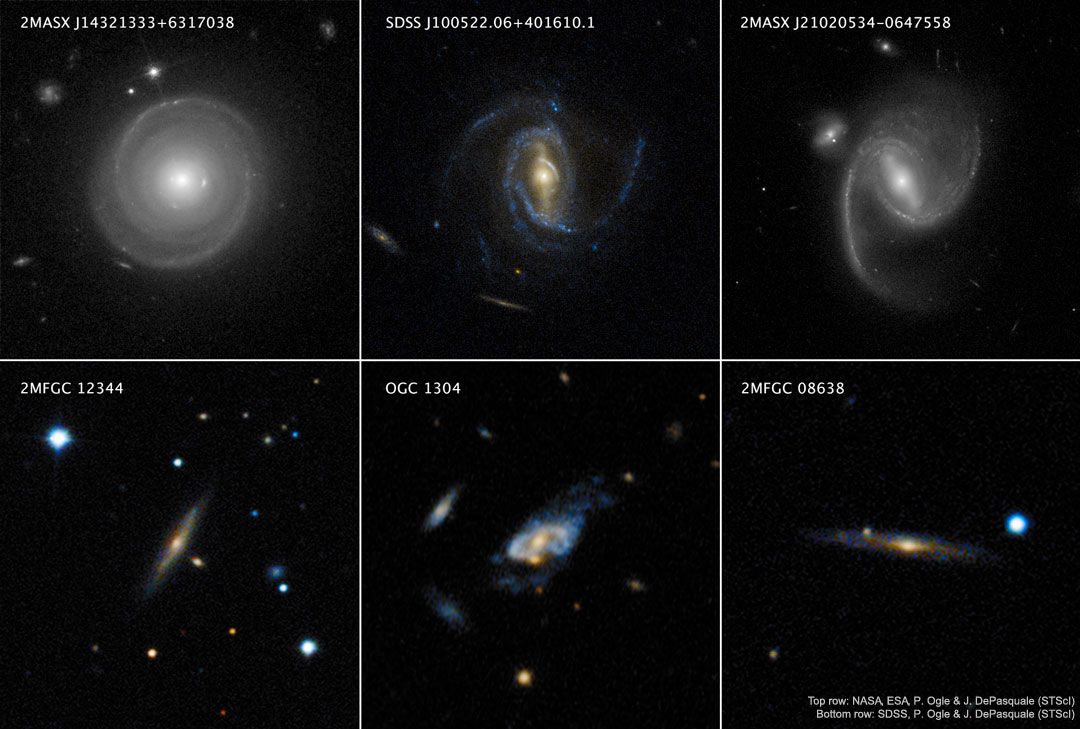2019 November 5
Spiral Galaxies Spinning Super-Fast
Image Credit: Top row: NASA, ESA, Hubble, P. Ogle & J. DePasquale (STScI);
Bottom row: SDSS, P. Ogle & J. DePasquale (STScI)
Explanation: Why are these galaxies spinning so fast? If you estimated each spiral’s mass by how much light it emits, their fast rotations should break them apart. The leading hypothesis as to why these galaxies don’t break apart is dark matter — mass so dark we can’t see it. But these galaxies are even out-spinning this break-up limit — they are the fastest rotating disk galaxies known. It is therefore further hypothesized that their dark matter halos are so massive — and their spins so fast — that it is harder for them to form stars than regular spirals. If so, then these galaxies may be among the most massive spirals possible. Further study of surprising super-spirals like these will continue, likely including observations taken by NASA’s James Webb Space Telescope scheduled for launch in 2021.
超快速自旋的旋涡星系
影像来源:Top row: NASA, ESA, Hubble, P. Ogle & J. DePasquale (STScI);
Bottom row: SDSS, P. Ogle & J. DePasquale (STScI)
说明:为什么这些星系旋转得如此快速?如果你根据每个旋涡星系的发光量来估计其质量,那么它们快速的旋转可能会使它们解体。关于这些星系为什么没有解体的主要假设认为是暗物质,暗物质是如此的黑暗以至于我们看不见它。但是这些星系的旋转速度甚至超过了解体极限,而它们是已知旋转速度最快的盘状星系。因此,我们进一步假设认为它们的暗物质晕是如此之大,旋转速度如此之快,以至于它们比普通旋涡星系更难形成恒星。如果是这样,那么这些星系可能是最庞大的旋涡星系之一。我们将对这种令人惊奇的超级旋涡星系继续进行研究,可能包括预计于2021年发射升空的NASA詹姆斯.韦伯太空望远镜的观测结果。



